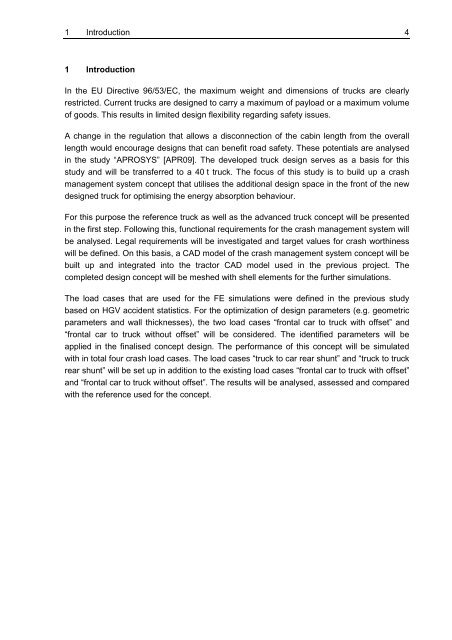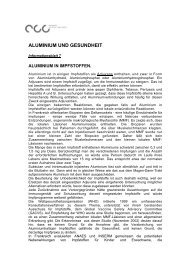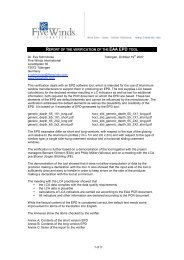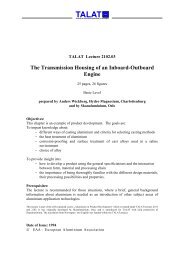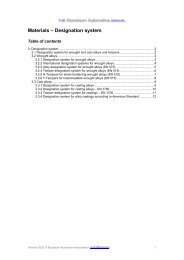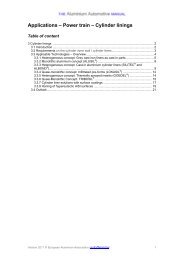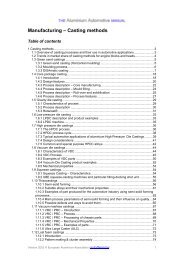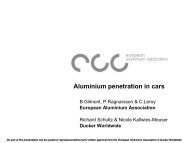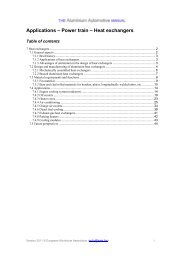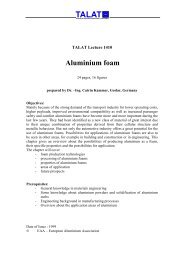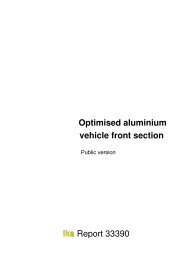Report 106310 Concept Design of a Crash Management System for ...
Report 106310 Concept Design of a Crash Management System for ...
Report 106310 Concept Design of a Crash Management System for ...
Create successful ePaper yourself
Turn your PDF publications into a flip-book with our unique Google optimized e-Paper software.
1 Introduction 4<br />
1 Introduction<br />
In the EU Directive 96/53/EC, the maximum weight and dimensions <strong>of</strong> trucks are clearly<br />
restricted. Current trucks are designed to carry a maximum <strong>of</strong> payload or a maximum volume<br />
<strong>of</strong> goods. This results in limited design flexibility regarding safety issues.<br />
A change in the regulation that allows a disconnection <strong>of</strong> the cabin length from the overall<br />
length would encourage designs that can benefit road safety. These potentials are analysed<br />
in the study “APROSYS” [APR09]. The developed truck design serves as a basis <strong>for</strong> this<br />
study and will be transferred to a 40 t truck. The focus <strong>of</strong> this study is to build up a crash<br />
management system concept that utilises the additional design space in the front <strong>of</strong> the new<br />
designed truck <strong>for</strong> optimising the energy absorption behaviour.<br />
For this purpose the reference truck as well as the advanced truck concept will be presented<br />
in the first step. Following this, functional requirements <strong>for</strong> the crash management system will<br />
be analysed. Legal requirements will be investigated and target values <strong>for</strong> crash worthiness<br />
will be defined. On this basis, a CAD model <strong>of</strong> the crash management system concept will be<br />
built up and integrated into the tractor CAD model used in the previous project. The<br />
completed design concept will be meshed with shell elements <strong>for</strong> the further simulations.<br />
The load cases that are used <strong>for</strong> the FE simulations were defined in the previous study<br />
based on HGV accident statistics. For the optimization <strong>of</strong> design parameters (e.g. geometric<br />
parameters and wall thicknesses), the two load cases “frontal car to truck with <strong>of</strong>fset” and<br />
“frontal car to truck without <strong>of</strong>fset” will be considered. The identified parameters will be<br />
applied in the finalised concept design. The per<strong>for</strong>mance <strong>of</strong> this concept will be simulated<br />
with in total four crash load cases. The load cases “truck to car rear shunt” and “truck to truck<br />
rear shunt” will be set up in addition to the existing load cases “frontal car to truck with <strong>of</strong>fset”<br />
and “frontal car to truck without <strong>of</strong>fset”. The results will be analysed, assessed and compared<br />
with the reference used <strong>for</strong> the concept.


